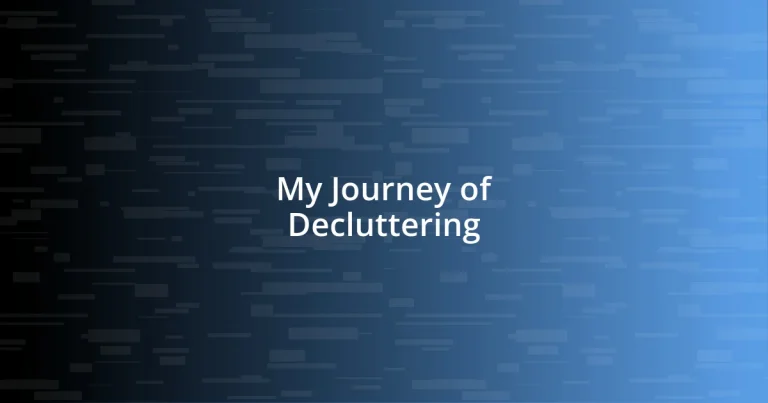Key takeaways:
- Decluttering serves as a transformative experience that can clear both physical and mental spaces, promoting a calmer and more inviting environment.
- Identifying clutter triggers, such as emotional states and life changes, helps in developing mindful purchasing habits and understanding the reasons behind accumulation.
- Implementing effective techniques like the “One-In-One-Out” rule and setting short time limits for decluttering tasks can create a more organized space and foster a positive mindset.
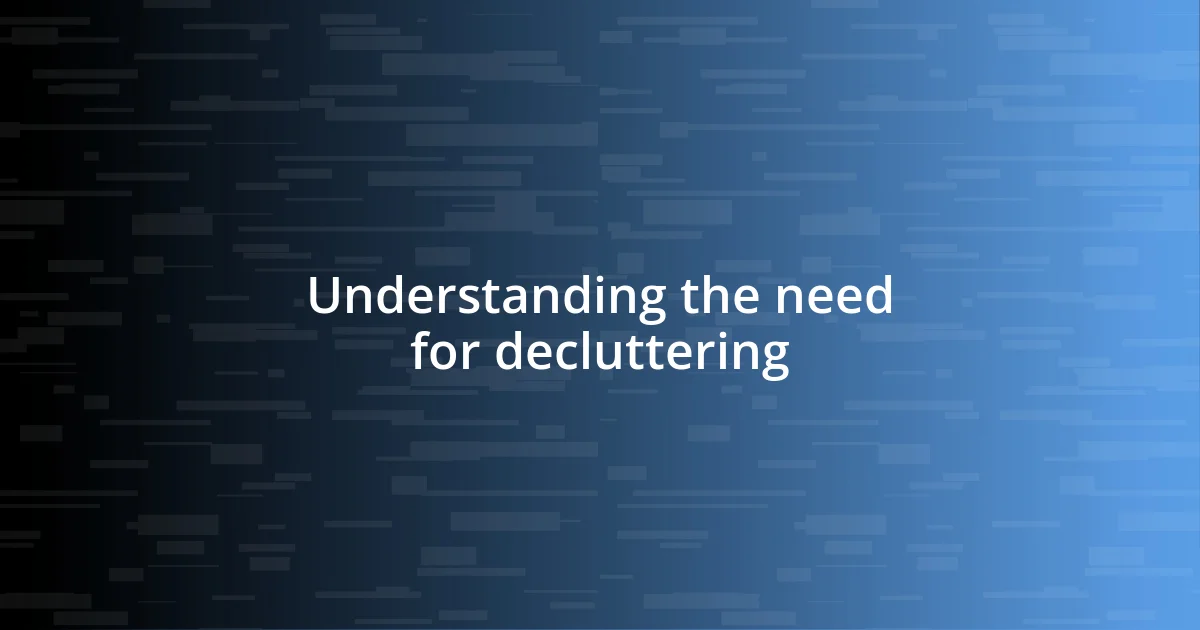
Understanding the need for decluttering
Decluttering is not just about cleaning up; it’s a deep-seated need that often stems from the chaos in our lives. I remember a time when my home felt like a physical representation of my mental clutter, with every pile of clothes or stack of papers weighing down my spirit. Could it be that by clearing our spaces, we’re also clearing our minds?
As I embarked on my decluttering journey, I found that letting go of excess belongings allowed me to create a calm, inviting environment. I vividly recall the first time I cleared out the closet—it felt like a weight had been lifted. I was startled by how much energy I wasted on things that no longer served me. It made me wonder: aren’t our homes meant to nourish us, rather than drain us?
Understanding the need for decluttering often comes from recognizing the emotions tied to our possessions. Every item can hold memories, and parting with them can bring a mix of nostalgia and relief. I still feel pangs of longing when I think of that vintage lamp from my university days, yet I have to ask myself, does it add value to my life now? This realization is what makes decluttering not just a task, but a transformative experience.
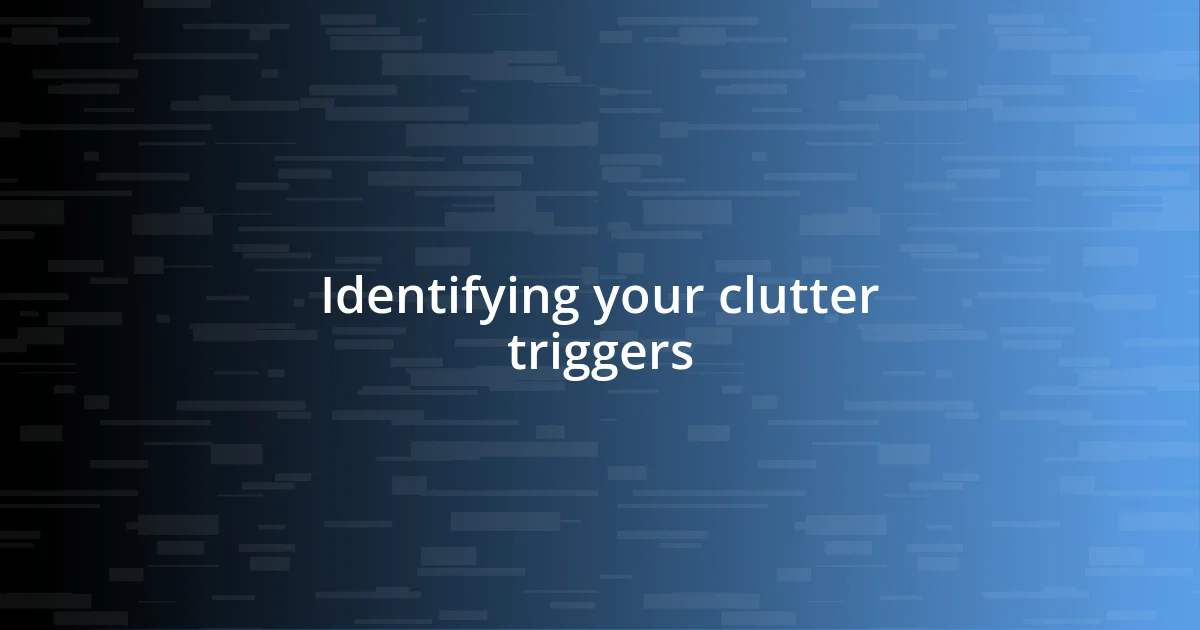
Identifying your clutter triggers
Identifying your clutter triggers is essential in understanding what leads to the buildup of unnecessary items in your space. I remember a particular moment when I realized that my shopping sprees were less about needing new items and more about seeking comfort during stressful times. Recognizing this pattern allowed me to create more mindful purchasing habits, ultimately leading to a more serene living environment.
To help pinpoint your own clutter triggers, consider these common factors:
- Emotional States: Do you tend to accumulate things when feeling anxious or sad?
- Life Changes: Major transitions, like moving or a new job, often lead to increased clutter.
- Social Influences: Are you more prone to buy items after spending time with friends or family who enjoy shopping?
- Nostalgia: Is your attachment to items rooted in sentimental memories, making it hard to let go?
- Convenience: Do you find yourself keeping things because it’s easier than deciding what to toss?
By reflecting on these aspects, you’re likely to uncover the deeper reasons behind your clutter, allowing for more effective strategies in your decluttering journey.
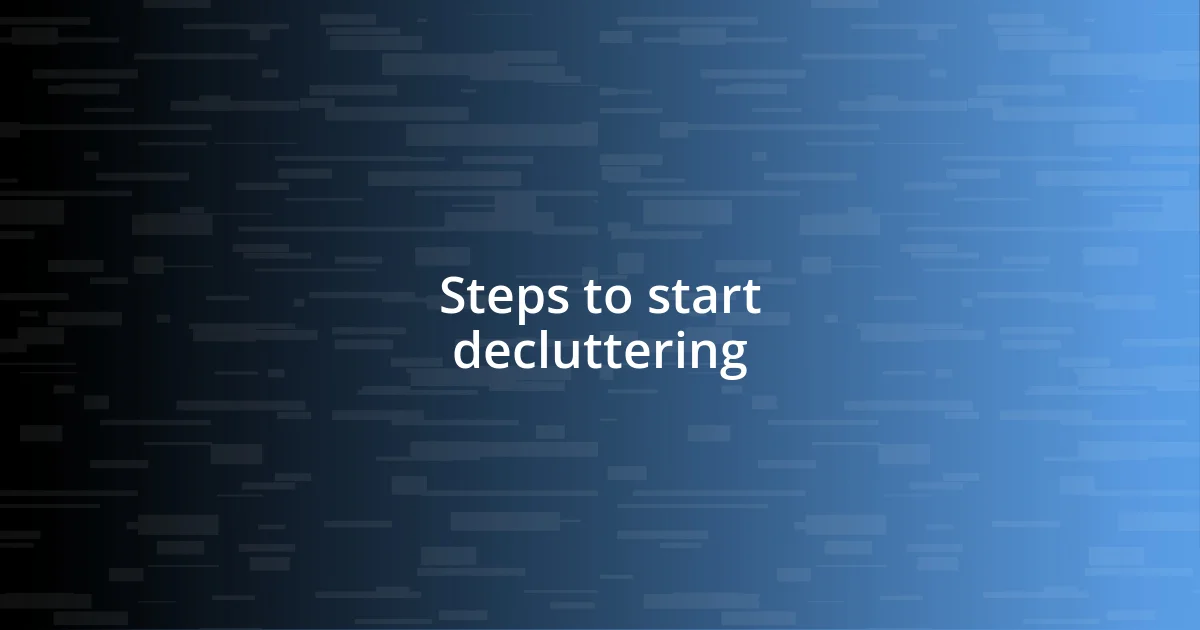
Steps to start decluttering
To kick off your decluttering journey, start by selecting a specific area or category of items to tackle first, such as clothing or books. I recall when I focused on my shoes; it felt manageable and less overwhelming. Breaking down the task this way creates a sense of accomplishment and keeps you motivated.
Another vital step is to implement the “Four-Box Method,” where you designate boxes for items you want to keep, donate, sell, or toss. When I did this, it was fascinating to see the number of items I couldn’t justify keeping. By having tangible categories, it became much clearer what my true essentials were, almost like a mini inventory of my life.
| Category | Action |
|---|---|
| Clothing | Try on each piece to see what fits and feels good. |
| Sentimental Items | Limit to one box for keepsakes that truly matter. |
| Papers | Sort into ‘important’, ‘needs action’, and ‘shred’ categories. |
| Knick-knacks | Choose your favorite few; the rest can be gifted or donated. |
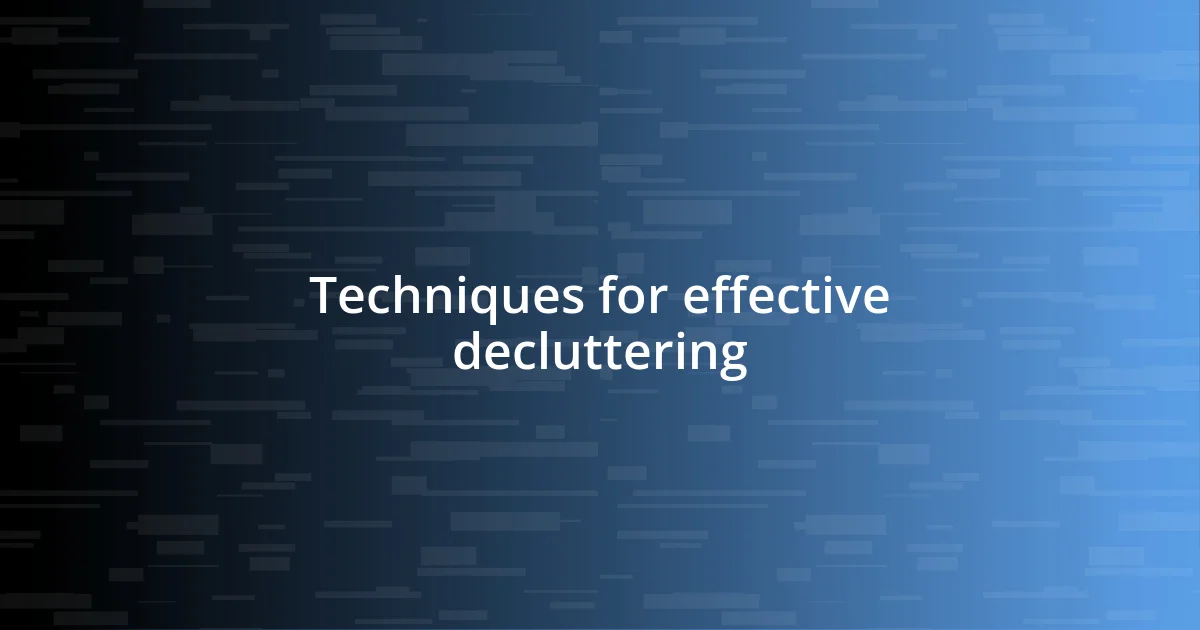
Techniques for effective decluttering
One technique I found incredibly helpful was the “One-In-One-Out” rule. Essentially, for every new item I brought into my home, I made a commitment to let go of an existing one. This practice not only curbed my impulse purchases but also encouraged me to think critically about my belongings. Have you ever noticed how easy it is to accumulate things without realizing it? By enforcing this rule, I felt a tangible shift in my mindset and space.
Another effective method is setting a timer for just 15 minutes and decluttering a small area. I remember those moments vividly—the focused burst of energy that the timer provided made the task feel less like a chore and more like a game. After just a few rounds, I was amazed at what I had accomplished. Does breaking it down into short, manageable tasks resonate with you when you think about tackling your clutter?
Lastly, I can’t emphasize enough the impact of visualizing your ideal space. I often mentally picture what my home would look like if I were to create the perfect atmosphere—calm, organized, and inviting. During this exercise, I realized how many items were clashing with that vision. I’ve even gone so far as to create a vision board that includes my dream living space. Does visualizing what you want help you detach from items that no longer serve your desired environment? Transforming your cluttered space into your dream oasis can fuel your motivation to declutter.
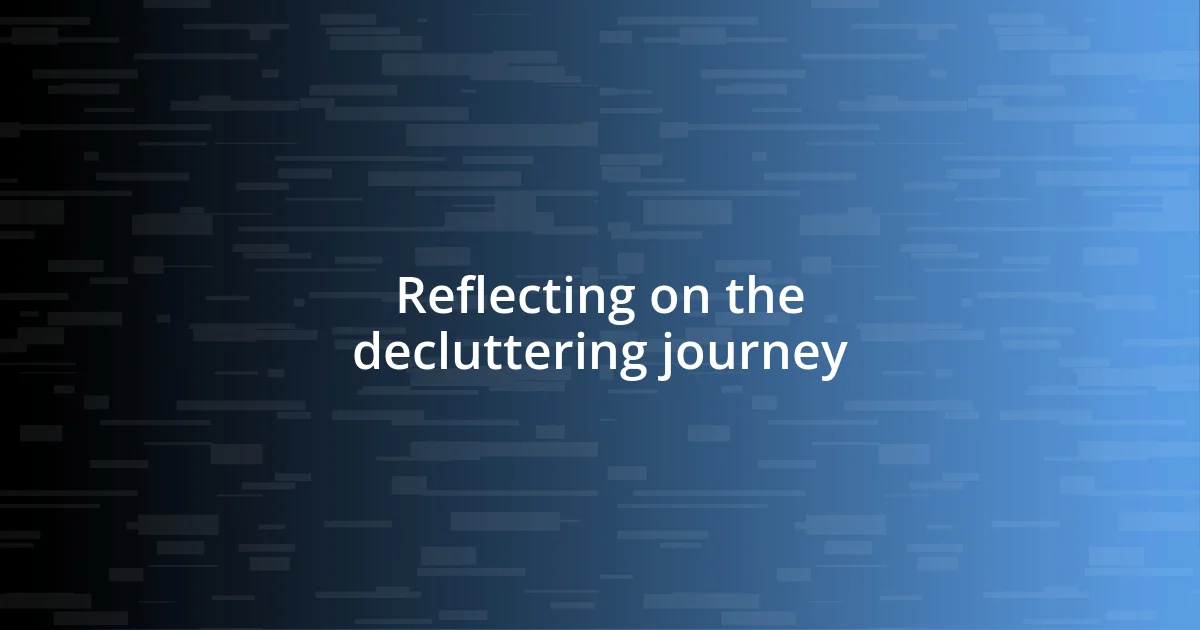
Reflecting on the decluttering journey
Reflecting on my decluttering journey has been as enlightening as it has been transformative. I remember sitting on the floor surrounded by my belongings, feeling overwhelmed yet strangely liberated. Each item I decided to part with felt like lifting a weight off my shoulders, and I couldn’t help but wonder—what else in my life could I lighten up?
As I dove deeper into this process, I realized that decluttering was more than just organizing my physical space; it was a chance to examine my relationship with my possessions. Feeling a rush when I donated items I no longer needed reminded me of the joy of giving. Have you ever felt that sense of relief when letting go of something that no longer serves a purpose in your life? For me, it became a powerful reminder that space is not just empty; it’s filled with opportunity.
Looking back, I now understand that this journey fostered a greater emotional clarity. The more I decluttered, the more I started to see patterns—both in my physical possessions and my mental clutter. I questioned: Was I holding onto items out of necessity, or was it nostalgia and fear of letting go? This reflection led me to appreciate the importance of having only what truly sparks joy for me. It’s incredible how a few simple decisions can reshape not just your environment, but also your mindset and emotional well-being.












